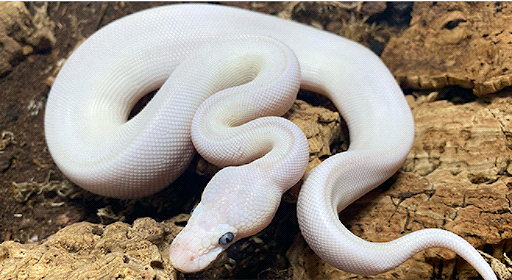Since humans have been able to record thoughts and stories, snakes have captured our imaginations. They are the subject of thousands of legends, mythologies, and folktales across every culture in the world. These days, snakes have exploded in popularity as pets, and dozens of species have found their way into our homes and hearts.
So, What’s the Appeal?
If you are a newcomer to the snake world and have not yet spent a lot of time around these animals, you may be curious as to just what makes them appealing pets in the first place. After all, they don’t always have the best reputation in our culture.
There are many reasons that people seek out snakes as a companion animals, including but not limited to:
- Wanting a lower-maintenance pet
Snakes typically only need to be fed around three times a month. Aside from cleaning their enclosure regularly, they need little other regular care. They don’t shed fur all over your home, need a litter box, or require daily walks.
- Needing something that doesn’t induce fur allergies
While being allergic to snakes is certainly possible, they can still be a great option for those who can’t tolerate exposure to fur or the dander of other animals.
- Looking awesome
Snakes are an incredibly varied species of animal that sport a bevy of appearances. From pale albinos to eye-catching, contrasting reds and yellows, there’s a snake for nearly any aesthetic taste.
Now, just because some snakes make great pets doesn’t mean that all are built for domestic life. However, there are a variety of well-tempered, small to medium sized snakes that happen to thrive in captivity. Here is a quick list of some of the more popular pet snakes, and some facts about them.
Snakes That Make the Best Pets
Ball Pythons
Ball pythons are a modestly sized snake from central and west Africa. They are known to be a slow moving, relaxed animal that adapts well to a variety of homes. These snakes also sport a respectable array (over 4,000) of colors and patterns known as morphs that surprise and delight.
Corn Snakes
Originating from the southeast United States, corn snakes are adapted to a variety of environments and biomes. From swamps to grasslands, these snakes have carved out an important niche in whatever ecosystem they reside in by controlling the population of various disease carrying pests.
Unfortunately, these snakes have evolved to look like the venomous copperhead as a survival mechanism. However, you can easily tell the difference between these two animals by observing that the corn snake has thinner bands and more scattered splotches. However, that doesn’t mean that these snakes are without a defense mechanism. They are known to excrete a foul odor known as “musk” when distressed.
Milk Snakes
These snakes happen to get their unique name from the misconception that their presence on a farm would cause the resident cows to produce less milk. Fortunately, we have since realized that these snakes were valuable pest control, and eventually became popular pets. Like the corn snake, these reptiles have adapted to their environment by evolving to look like more dangerous animals, such as the coral snake.
Kingsnakes
Kingsnakes have one of the largest ranges of any snake on this list, inhabiting ecosystems across north and central America. While these snakes do make good pets, they are known to be cannibalistic and will eat any other snake in its enclosure (hence the “king” moniker). If you intend to keep this reptile, simply be sure to keep it away from other snakes.
Hognose Snakes
Hognose snakes, as their name implies, have an adorable, flattened, porcine-like nose. Unlike the other snakes here, they are mildly venomous. However, this is not medically significant, and they are completely safe. The hognose snake is also known for its exceptionally dramatic way of “playing dead” when stressed or agitated, which can be rather amusing. Of course, we would never recommend that you purposefully stress out your animal to elicit a reaction.
Final Thoughts
If you are looking for a well-tempered, long lived companion, any of the snakes for sale on this list would make a great choice. However, it is still important to understand their unique needs and differences, and choose your next pet based off of that assessment.
Regardless of the species of snake you eventually seek out, we would always recommend you do extensive research on how to care for your animal, and the breeder they come from. Fortunately, you will have an extensive community of snake fanciers to point you in the right direction.







